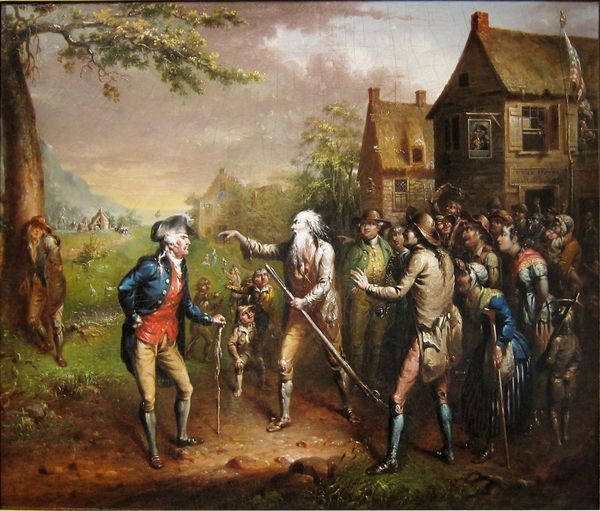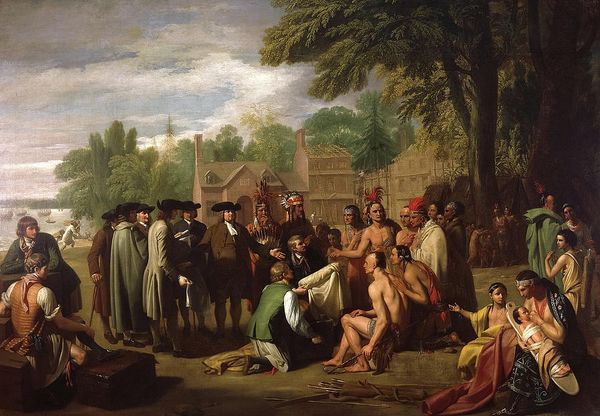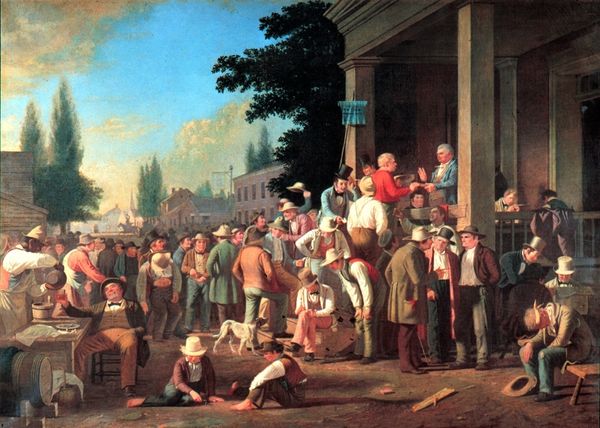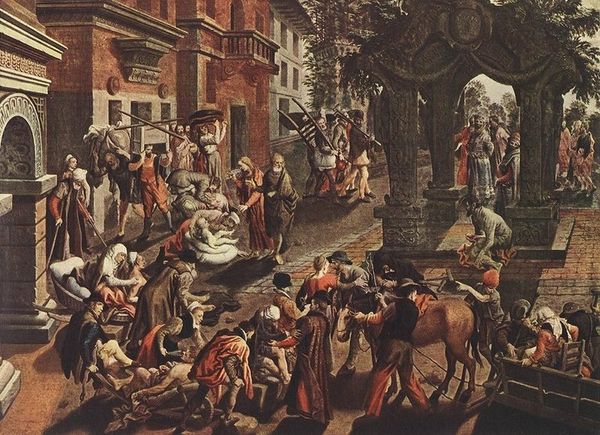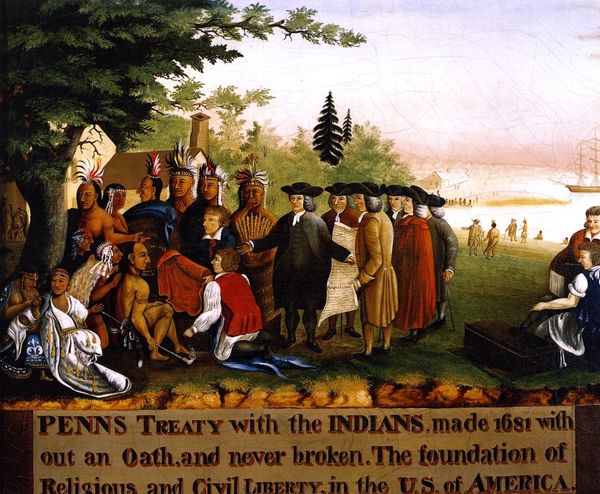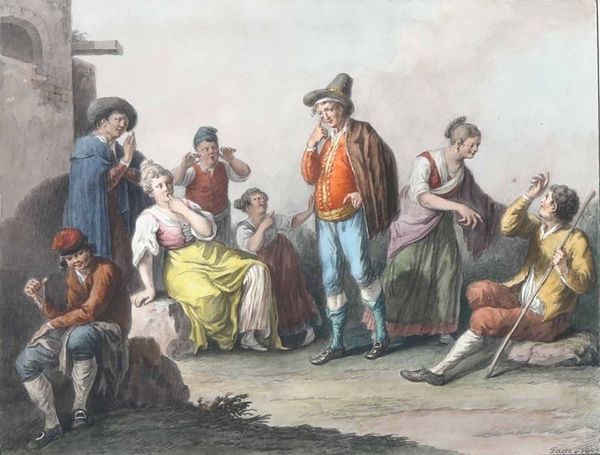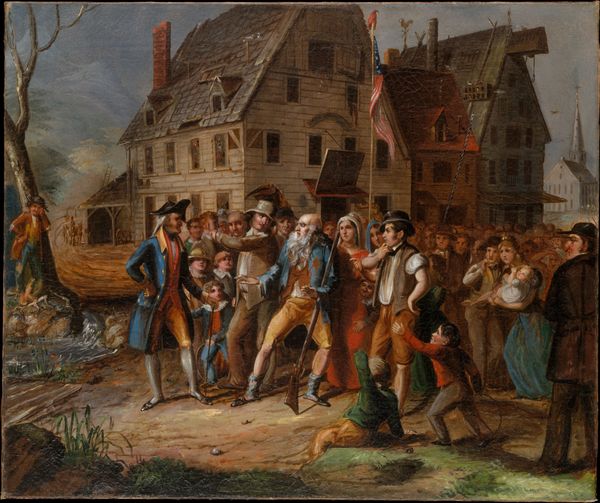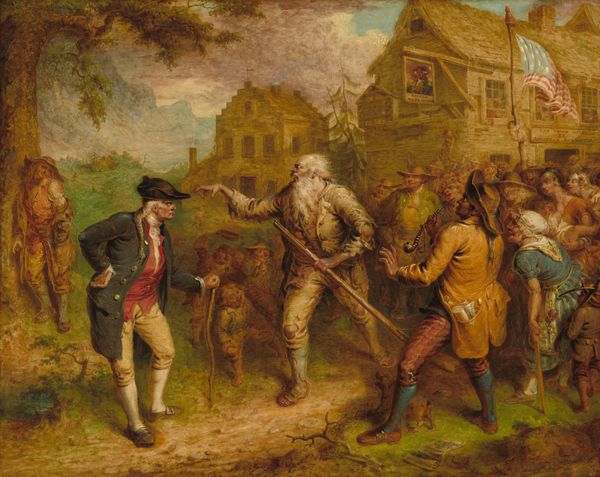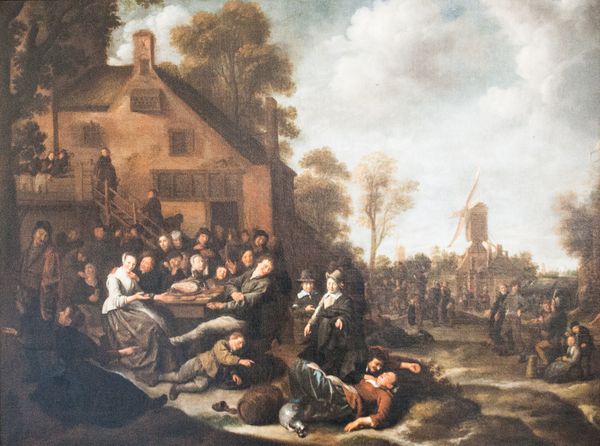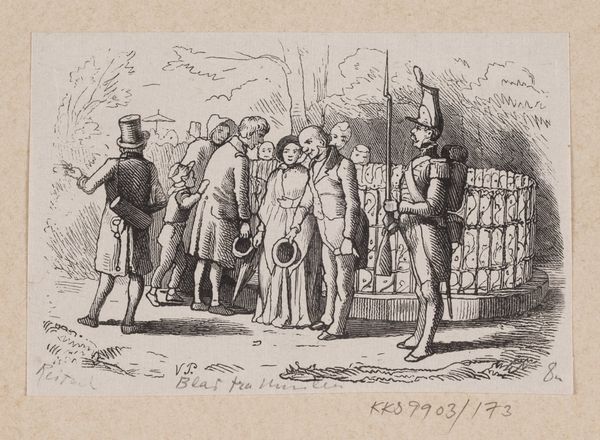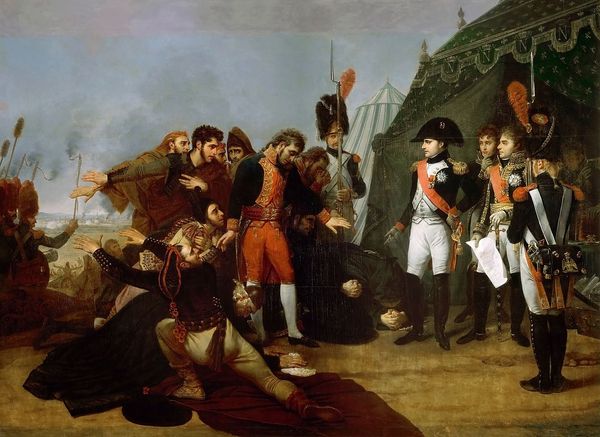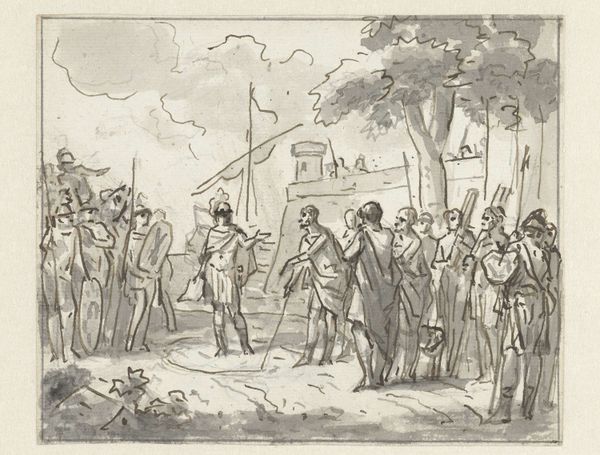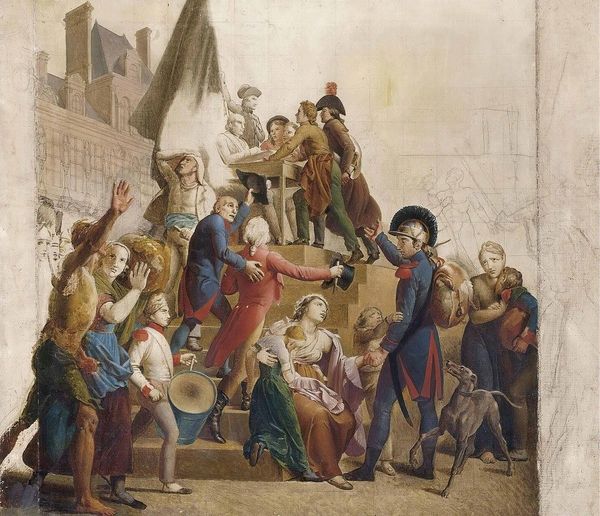
oil-paint
#
portrait
#
oil-paint
#
landscape
#
figuration
#
oil painting
#
naive art
#
genre-painting
#
history-painting
Copyright: Public domain
Curator: Here we have Edward Hicks's "Penn's Treaty," painted around 1835. It depicts William Penn's legendary treaty with the Lenape Native Americans. Editor: Well, isn't that charming, in a very wide-eyed, naive kind of way! It’s like stepping into a school play, all innocent faces and neatly arranged players. What I find striking is the overall sweetness. Curator: Sweet is an interesting word choice. Consider that Hicks painted multiple versions of this scene, each one slightly different, often against the backdrop of his "Peaceable Kingdom." Editor: You mean that iconic scene with the lion and the lamb? The innocence taken even further... It feels deliberate, as if Hicks were trying to project a particularly… sanitized version of colonial history? Curator: Indeed. The painting, through its style and composition, romanticizes this pivotal moment. In truth, the treaty itself, while initially fair, became a source of later contention as colonial expansion progressed. Hicks omits that complicated history. Editor: The river with ships and little house reminds me of paper toy-landscapes, flat and slightly comical. Those buildings aren't menacing at all; just there like a polite suggestion of claiming land. Curator: Yes, he reduces conflict to a formality in service to a didactic intent. As a Quaker, Hicks very consciously promotes the ideal of peaceful negotiation and harmonious co-existence, as much in response to events unfolding in his time as those that shaped his nation's founding mythology. Editor: I wonder about the contemporary viewer in Hicks's day. Does his painting serve as some kind of soothing balm or maybe a stern reminder of an ethos rapidly being displaced? Either way it is hard to reconcile its artless, wide-eyed innocence. It serves to remind how complex the past always seems, the more simple its retelling. Curator: Absolutely. We bring our current awareness to these paintings, recognizing that historical narratives are constructed and often serve particular interests, which provides more understanding. Editor: Ultimately, these seemingly straightforward paintings contain surprising dimensions that spark further curiosity.
Comments
No comments
Be the first to comment and join the conversation on the ultimate creative platform.
